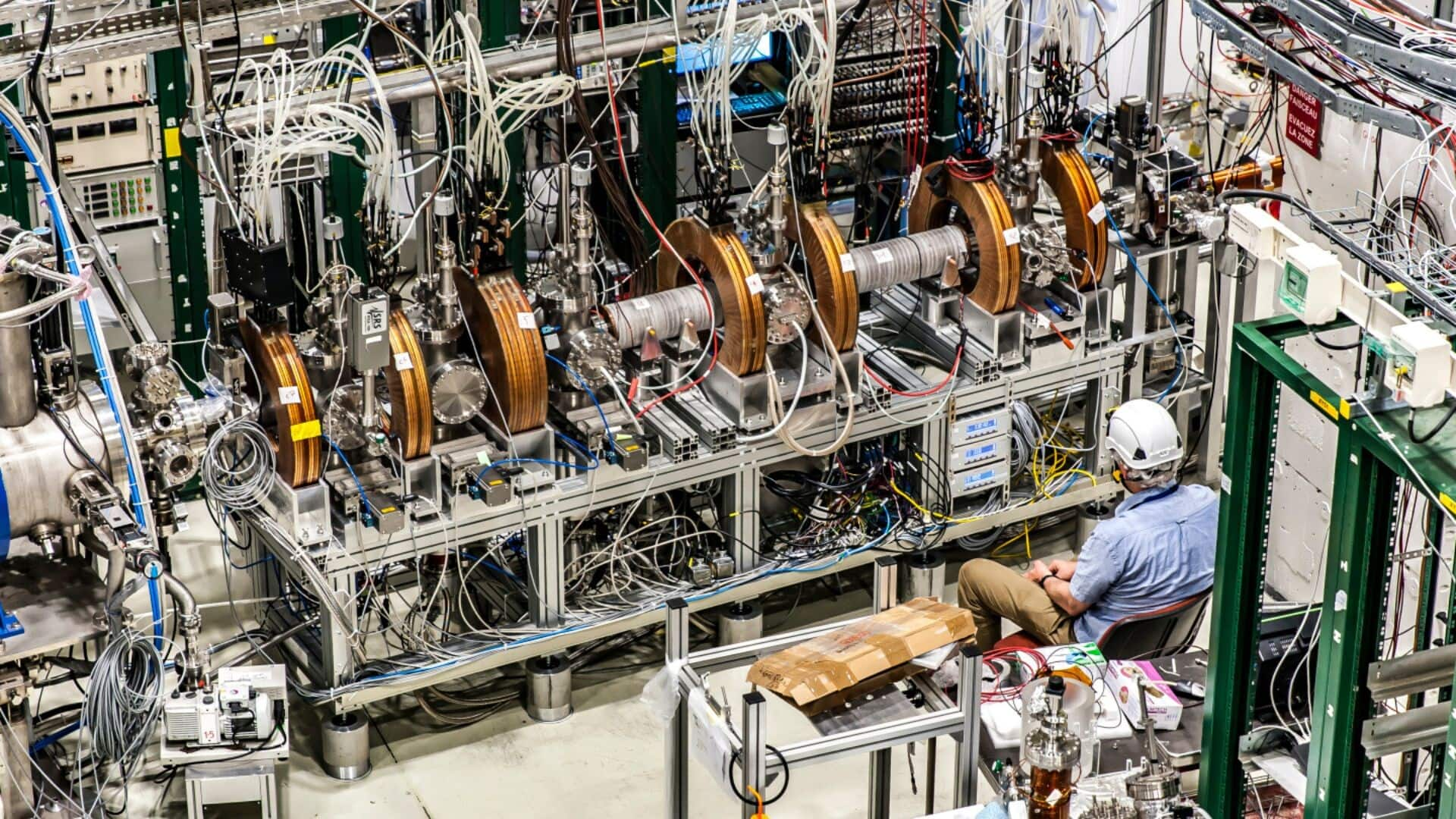
CERN's innovative device slashes antimatter cooling time by 99%
What's the story
The European Organization for Nuclear Research (CERN) has made a significant breakthrough in the field of antimatter research. It has developed an innovative device that dramatically reduces the cooling time of antiprotons, a type of antimatter. This development now allows the Baryon Antibaryon Symmetry Experiment (BASE) team to complete 1,000 measurement cycles within a month, a task that earlier would have taken three years of continuous measurement.
Antimatter mysteries
Antimatter: A potential key to unlocking new energy sources
Antimatter, often considered the mirror image of matter, is composed of fundamental particles with opposite electric charges to those forming matter. For example, antimatter consists of anti-protons and positrons, counterparts to protons and electrons respectively, but with reversed charges. The study of these particles could potentially unveil new types of energy sources and other unknown aspects about our universe.
Cooling necessity
The need for cooling in antimatter research
To investigate antimatter, scientists generate and collide particles like antiprotons and positrons in a particle accelerator such as the Large Hadron Collider (LHC). These particles must be cooled while they move. Cooler antiprotons move more slowly, allowing for easier control and precise study without interference from rapid, random movements. This precision is essential for conducting accurate experiments and measurements.
Device efficiency
CERN's new device revolutionizes antimatter cooling process
The BASE team previously used a setup that required about 15 hours to cool antiprotons. "As we need to perform 1,000 measurement cycles, it would have taken us three years of non-stop measurements, which would have been unrealistic," said Barbara Latacz, the lead study author and a researcher in the BASE experiment at CERN. The new device uses a similar cooling setup but with modifications that allow it to cool an antiproton in just eight minutes.
Upgrades
What are the advanced features?
The new device slows down antiprotons using an Antiproton Decelerator (AD) and Extra Low Energy Antiproton ring (ELENA). Numerous antiprotons are then confined in a Penning trap, a device that uses magnetic and electric fields to contain charged particles. The antiproton is transferred between two Penning traps until the desired temperature is achieved. This setup enables the BASE team to conduct 1,000 measurement cycles and obtain precise results within a month.
Future prospects
It holds promise for future antimatter research
The new device from CERN also features an advanced electrode system and optimized electronics. These enhancements have led to improved heat management, reduced background noise, and increased efficiency. "Our new device will allow us to reach a precision of a tenth or even a hundredth of a billionth. The slightest discrepancy could help solve the mystery of the imbalance between matter and antimatter in the Universe," said Stefan Ulmer, one of the study authors.